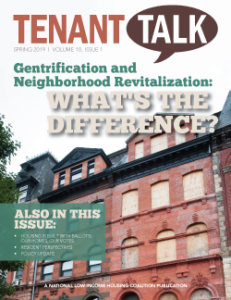Anti-Displacement Policies, Programs, and Positions
Our region is experiencing an incredible amount of growth and while it has brought great benefits to some there are many who are being left behind and pushed out by the increasingly rising rents.
People, families, whole communities are having to move from the neighborhoods where their cultural anchors are and where their roots are. Displacement is happening across King County as people move from Seattle to suburban cities to out of King County all together. People are losing their communities, and we all are losing the vibrancy of ethnically and economically diverse neighborhoods. As we push for the development and preservation of the affordable homes we need to keep our communities affordable and inclusive, we need to be cognizant of the people who make up the backbone of these communities.
Below you will find research and tools about understanding the impacts of displacement and how to engage in conversations and work to prevent it.
HDC has commented on the City of Seattle’s anti-displacement strategies. Reach out to HDC to join the Policy Advisory Group’s anti-displacement work.
View HDC’s Housing & Community Development Summit report.
“You Don’t Have to Live Here” from Enterprise and Frame Works Institute
When talking about displacement, many people often struggle to understand the importance of staying in the community where you are rooted in rather than embracing this idea of mobility. “Just move somewhere more affordable,” is a common response which focuses more on individual choice to move rather than the systemic forces causing someone to lose their choice in where they live. Here are some recommendations on how to message the importance of place.
- “Tell stories that balance the people, places and systems perspectives”
The individualism that triggers people to put the responsibility of moving to a more affordable neighborhood is often conjured by telling stories focused on the plight and housing struggles of specific individuals and families. It’s crucial to pull those stories to a level where you are talking about the importance of place for example the proximity to specific religious or cultural centers as well as tying the blame to systemic forces taking away choice of where people can live and create community. - “Bring the connection between housing and other issues into sharper focus”
To combat narratives that diminish the importance of quality affordable housing in communities of opportunity it’s vital to draw the connections between housing and education, access to safe recreation and parks, job opportunities, and more. Once those connections are drawn you can expand how ensuring everyone has access to those crucial components of a successful environment benefits us all. This helps create the collective responsibility and the collective benefit mindset.
Additional resources:

PSRC Displacement Risk Analysis
As a part of their Vision 2050 work, the Puget Sound Regional Council developed a tool to identify areas at risk of displacement based on current neighborhood conditions which include: socio-demographics, transportation qualities, neighborhood characteristics, housing, and civic engagement.
NACEDA: Scale and Accountability

Today, King County needs 156,000 affordable homes to ensure no one is spending more than 30% of their income on housing costs. At the same time, King County is composed of close-knit, diverse, rooted communities who’s needs and voices vary while their tremendous need for affordable housing is constant. The development community is wrestling with the tension of building to the scale we need to build enough affordable homes while at the same engaging communities authentically and continuously. This piece uses reflections from leaders as they balance building to scale and remaining accountable to the local community.

NLIHC Tenant Talk: Gentrification and Neighborhood Revitalization, what’s the difference?
Anti-displacement advocates see intentional development as the path forward towards equitable, affordable, and inclusive communities. “The development process should enable community members to identify the types of housing, services and infrastructure that should exist in their neighborhood. The process should value longtime residents’ visions of neighborhood change and give the power of decision making to community residents. A healthy community is one that acknowledges and supports the importance of racial equity, community and culture.”
Have other great anti-displacement resources? Reach out to Patience.


